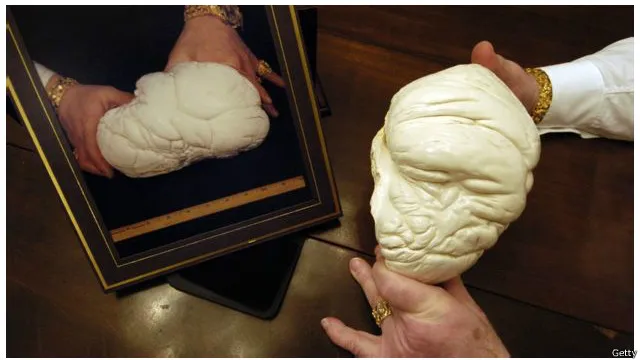“Calcium-Carbonate Concretions”
Michael LaPointe writing for The Atlantic on The Pearl of Lao Tzu
But elsewhere in the Miner letter, the curator terms the specimen a “pearlaceous growth,” and stresses that it ought not to be classified as a precious pearl. The gems we commonly know as pearls are formed within the organic tissue of saltwater oysters, whose inner shells possess nacre, or mother-of-pearl, which generates a pearl’s signature luminescent sheen. Compared with these gems, Tridacna-clam pearls are more like porcelain. Indeed, the Pearl of Lao Tzu cuts an ugly figure. Some might liken it to a lump of white clay; others might think it’s an alien egg.
Under U.S. trade law, it’s perfectly legal to call such objects pearls; any shelled mollusk—even a snail—can make a pearl. But gemologists traffic in precious pearls, and discard the rest with a pejorative classification: calcium-carbonate concretions.
I think it looks like a big ‘concretion’ of hardened, polished, chewing gum. Like a misshapen mozzarella ball.
